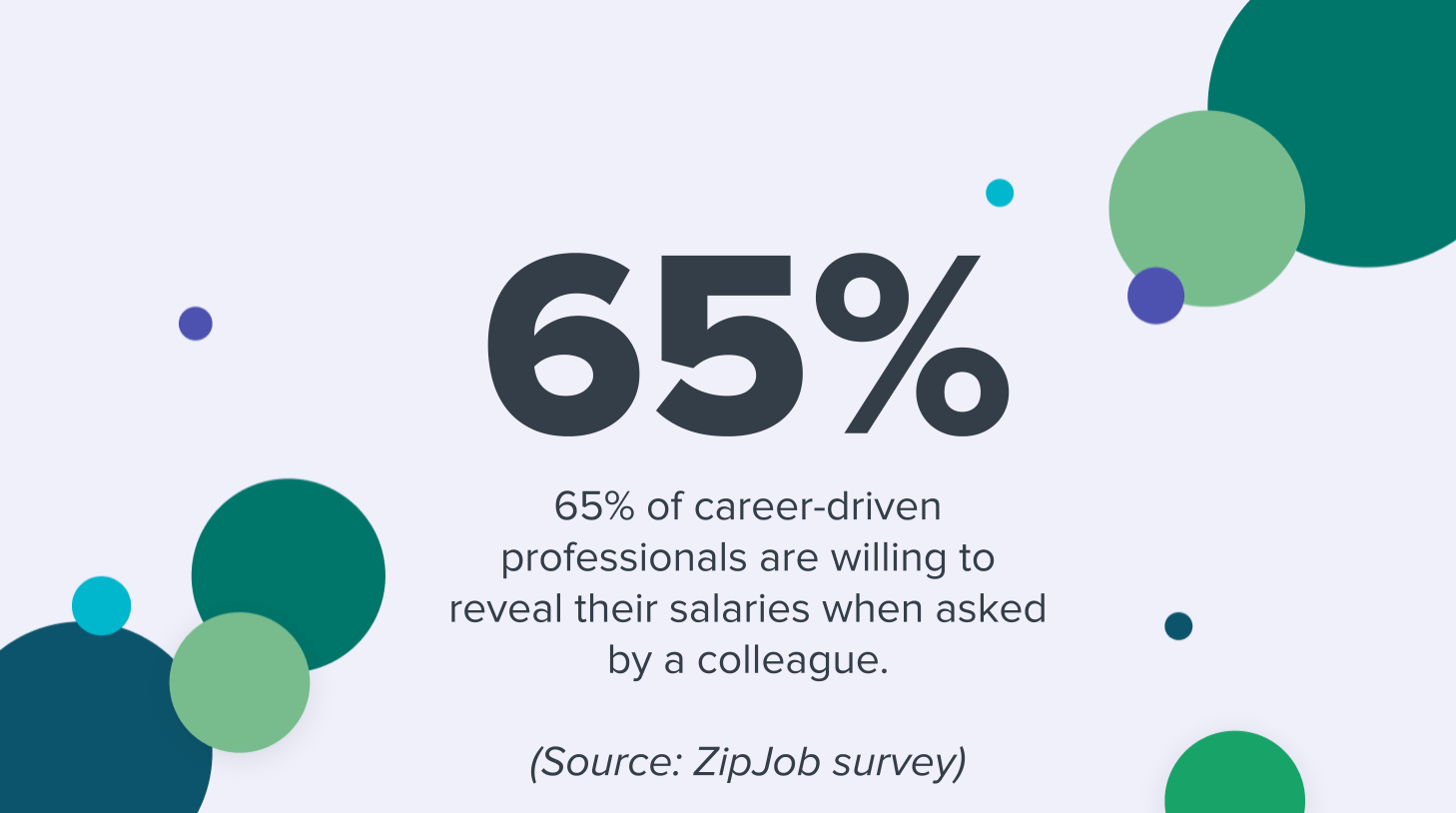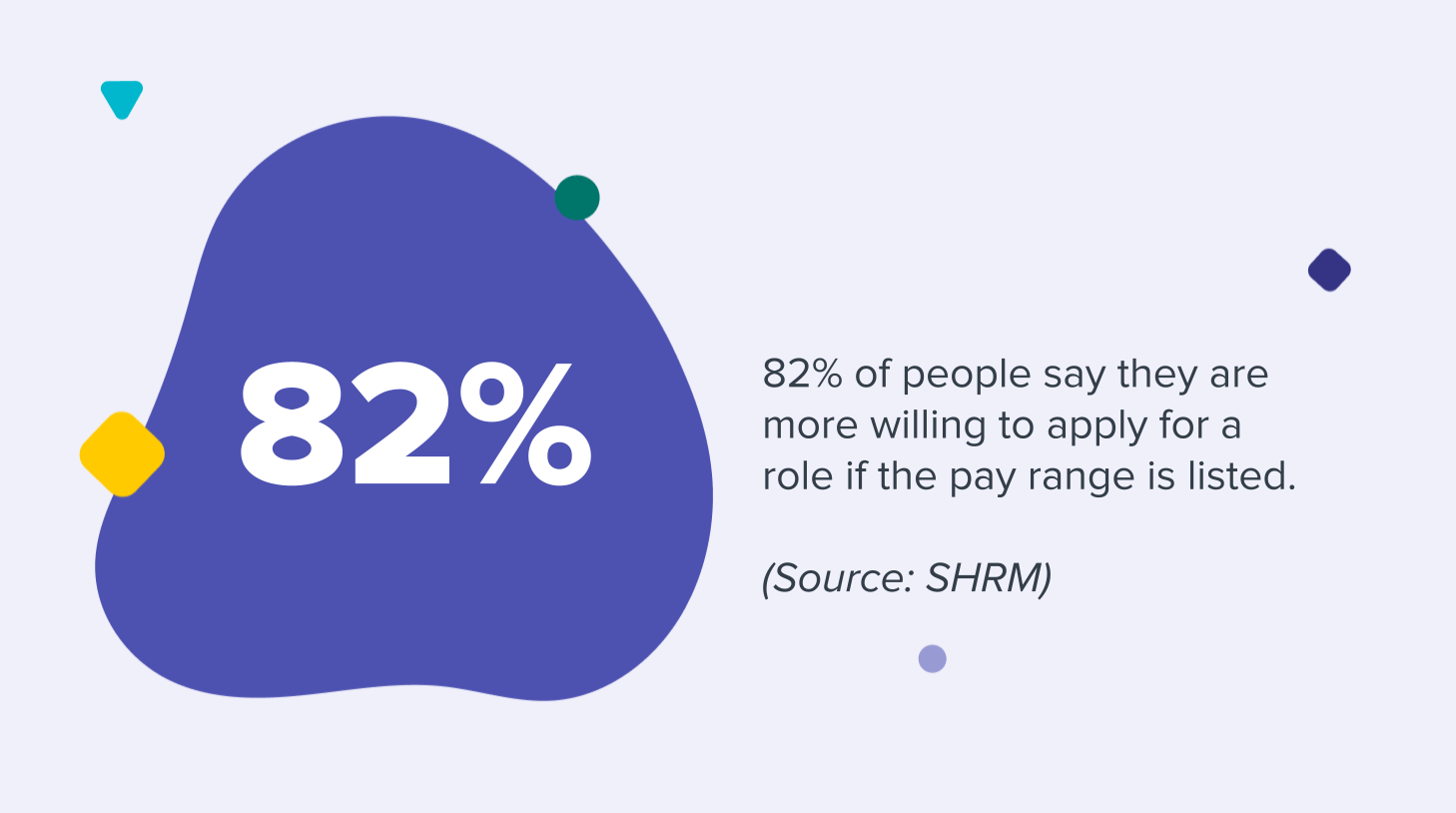A chat about salary transparency: the shift towards open discussion
We sat down with ZipJob's Amanda Augustine to discuss how salary transparency promotes fairness, attracts talent, and enhances company culture by making pay scales public, reducing pay gaps, and fostering a culture of openness.

Recent data shows that career-driven professionals want salary transparency when they’re looking at new opportunities. Stigmas and taboos around public sharing of salaries between colleagues and in job descriptions are increasingly going away.
Does it matter for employers? Absolutely. Your talent attraction and retention metrics will be impacted if you don’t plan for this.
Related: Salary transparency: Good thing for employees – and employers?
So, to help you get ahead of any potential issues around salary transparency, we talked with Amanda Augustine, a certified professional career coach and resume writer, and the resident career expert at ZipJob, a professional resume service.
Amanda had great insights to share. Let’s get into it.
Contents
Salaries are no longer taboo
Recent developments highlight a significant shift towards transparency in the workplace. A ZipJob survey shows that two-thirds (65%) of career-driven professionals are willing to reveal their salaries when asked by a colleague.
And 28% of professionals would not be offended if asked about their salary.
This highlights a destigmatization surrounding the topic.
“We are certainly moving more towards this workplace that requires [and] demands greater transparency, openness, even vulnerability across all aspects,” says Amanda.
Related: Pay transparency: the pros, the cons, and best practices
Amanda points out that this shift isn’t just happening in social circles. It’s increasingly underscored by legislation across the United States; as of January 2024, 30 states or localities have laws mandating employers to disclose pay ranges, with that number likely to keep growing.
And as of 2023, nearly 83.6 million workers in the United States may be covered by pay range transparency laws, according to the National Women’s Law Center.
Governments have their own pilot projects underway in this area. In March 2022, the UK government launched a pay transparency pilot scheme encouraging companies to disclose salaries in all of their job postings.
And in 2023, the EU Pay Transparency Directive was passed. Employers with 100 or more employees are required to publish information on the pay gap between female and male employees, as well as share information on how pay is set, progressed, and managed.
Suffice it to say – there’s a lot of ‘official’ movement in this area.
The shift in the zeitgeist
When asked why all this was happening, Amanda pointed to the increasing influence of younger generations on workplace expectations.
“Younger workers have grown up in the era of social media and sharing, value transparency in all aspects of their lives, including compensation,” Amanda says. “Their expectations are shifting workplace norms, compelling organizations to adapt.”
It’s part and parcel of a larger shift as well, she adds.
“The #MeToo, Black Lives Matter, all those things; we know that salary transparency also shines a spotlight on any major wage gaps that may occur across various sectors of your population, of your workforce, whether that’s ethnicity or race, whether that’s gender,” Amanda adds.
“Those things tend to be more apparent – and there’s a greater need to then address them,” she explains.
“So it’s not a surprise, at least in my opinion, that we’re seeing a lot more force or demand on this transparency because it intersects in so many different ways with what’s been going on in the workforce for the past three to four years.”
“We’re seeing a lot more force or demand on this transparency because it intersects in so many different ways with what’s been going on in the workforce for the past three to four years.”
The reprioritization of salary
With this comes a shift in job priorities – for example, Workable’s Great Discontent survey found that 69% of respondents would go to a new job if they had a better salary.
“For the longest time, company culture had overtaken and eclipsed compensation, but we have started seeing a shift back towards compensation in the last few years.” Amanda adds that it’s not a huge shock, nor is it about the actual monetary value of transparency. It’s a precursor to career paths and expectations.
“It’s an overall transparency. How are people being evaluated? And is it consistent across positions?“
The remote work factor
Amanda suggests that the increase in remote work may correlate with the increase in transparency around compensation. Previously, she says, companies were able to offer more in way of culture and community when workers traditionally worked on location – but that’s lacking in the remote sphere.
“Not every company’s figured out how to do that in a remote setting,” she notes. And the same applies for full-time remote workers as well – Amanda puts herself in the shoes of someone who works remotely:
“I don’t really care about the culture anymore. I’m not joining in on the activities. I’m not doing that sort of stuff. I don’t want to sit through another virtual happy hour.”
And that brings us back to salary: “I want to make sure I’m getting paid what I’m worth.”
A multifaceted challenge for employers
Even for those fully bought into the value of full salary transparency, the transition can be potentially challenging territory for employers accustomed to keeping salaries and compensation ranges in the back room.
Pay gaps, often unintentional yet still existent, will inevitably come to light. Uncomfortable disconnects will surface between a new hire commanding a higher salary than a veteran employee who’s been with the company for a long time.
The same discomfort applies for the lack of alignment in salaries across similar positions, which exposes potentially illegal bias across the company.
Amanda emphasizes that companies need to be thinking about this.
The power of knowledge
“Employers can no longer sustain substantial gaps in pay without repercussions,” Amanda says, highlighting the potential impact on recruitment as potential job candidates learn about these pay imbalances via employer review sites such as Glassdoor – again highlighting the transparency and sharing of information.
“Candidates and employees are becoming more informed, and these disparities can greatly affect an employer’s reputation and their ability to attract top talent.”
“Candidates and employees are becoming more informed, and these disparities can greatly affect an employer’s reputation and their ability to attract top talent.”
Also, companies can no longer control that narrative. Once it’s out there, it’s out there for the world to see.
“You see it with social media, right? Not that I’m condoning this, but people are willing to record any and everything that happens at work and share with whosoever eyeballs they can find online. We’re also seeing more of that. I just don’t think they’re going to be able to continue having substantial gaps in pay in the future,” she says.
Increased leverage for employees and candidates
Retention will be impacted since candidates and employees have greater leverage with this extra information on their hands.
“We’re going to see a lot of people trying to negotiate to close those gaps. And if they’re not finding an employer who’s willing to address that or make an effort to close that gap, people are going to start looking elsewhere.”
Even if a company is fully balanced in salary up the ladder and across positions, talent attraction will change – and a SHRM report shows this.
“[In the SHRM report], 82% of people said they are more willing to apply for a role if the pay range is listed. And 74% are less likely to apply for a job if it doesn’t list that information.”
So, what can employers do?
So, clearly, there are repercussions either way. If you open up the information coffers, pay gaps come to light and issues will inevitably arise. Keep it under wraps, and it’s a bad look for your employer brand.
So what do you do as an employer? You’ll have to power forward – but you can do it the right way. There are clear benefits to transparency – for employers, it’s about fostering a culture of openness not just in compensation but in career progression, which is also encouraging information for employees.
Companies can also procure salary benchmarking tools and softwares which will help them stay competitive when hiring and retaining top talent.
It’s all in your hands as an employer, Amanda says.
“It’s all about how you approach someone and how you pose these questions and how you conduct these conversations – that will decide if it’s a positive or a negative outcome for everyone involved.
“Because there certainly is power in knowing what everyone else is being paid or what they’ve been told and sharing that information.”
Rome wasn’t built in a day – but things are changing.
“I don’t think it’s going to happen overnight,” says Amanda. “I don’t think we’re going to have this magical change, but I do think it’s going to move more towards that transparency direction. And we’re going to continue to see a greater comfort level amongst employees talking about these issues.“
Frequently asked questions
- How is salary transparency influencing the workplace?
- Salary transparency is leading to a more open workplace culture, reducing pay gaps, and forcing employers to reassess compensation fairness. It's driven by legislation, societal demands, and changing workforce expectations, particularly among younger generations.
- Why is salary transparency becoming more common?
- A combination of legislative changes, societal shifts, and the influence of social media has made salary discussions more acceptable. It addresses inequalities and meets the expectations of a workforce demanding greater transparency in all aspects of employment.
- What benefits does salary transparency offer to employees?
- Employees benefit from increased fairness, the ability to negotiate better pay based on transparent benchmarks, and a clearer understanding of their career progression and compensation expectations within an organization.
- How can employers effectively implement salary transparency?
- Employers can adopt salary transparency by using benchmarking tools to ensure competitive pay, openly sharing pay ranges in job postings, and fostering an environment where salary discussions are normalized and encouraged.
- What challenges do employers face with salary transparency?
- Employers may need to address existing pay disparities, manage employee perceptions of fairness, and navigate the complexities of transitioning to a more transparent compensation model while maintaining privacy and discretion.






